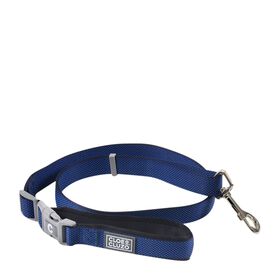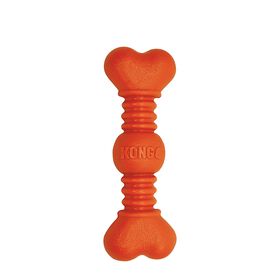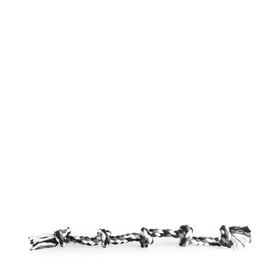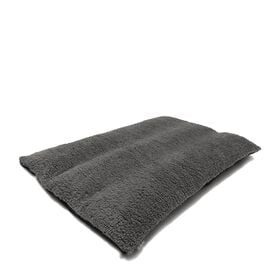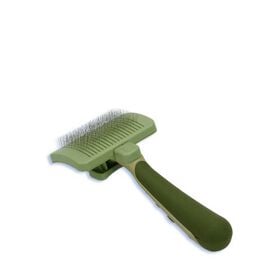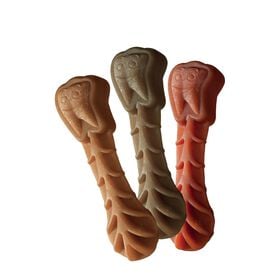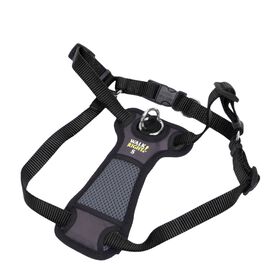Are you familiar with the dog breed known as the Great Pyrenees? Originating in the area where the breed was developed between France and Spain, these majestic livestock guardians probably evolved from dogs that originated in Asia Minor. These exceptional herding dogs with their impressive size are loyal pets. Learn everything there is to know about these dogs with beautiful, white coats.
La race a probablement évolué à partir d'un groupe de chiens de garde de troupeau de montagne principalement blancs qui sont nés il y a dix ou onze mille ans en Asie Mineure.
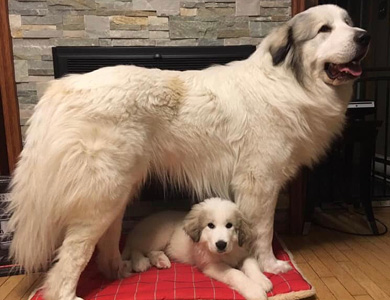
Physical appearance
The Great Pyrenees is a majestic breed with an imposing size and an unparalleled elegance and beauty. Its thick, weather-resistant coat is primarily white with occasional grey patches or shades of tan. The fur is fuller around the neck and shoulders, where it forms a ruff or mane, which is more pronounced in males. The average height at the withers ranges from 69 to 81 cm (27 to 32 in.) for males and 64 to 74 cm (25 to 29 in.) for females. Generally, males weigh between 45 and 55 kg (100 and 112 lb) and females, between 37 and 50 kg (85 and 110 lb). Weight is proportional to the dog’s overall size and structure. The Great Pyrenees is a balanced dog, slightly longer than it is tall, creating a somewhat rectangular shape.
The medium-sized, almond-shaped eyes are set slightly obliquely and are a dark brown colour. The ears, which are relatively small for the size of the animal, are v-shaped with rounded tips, set on at eye level and carried low and close to the head. The feet are rounded and the toes are well arched. One of the characteristics of this breed is the double dewclaws (six toes) located on each hind leg.
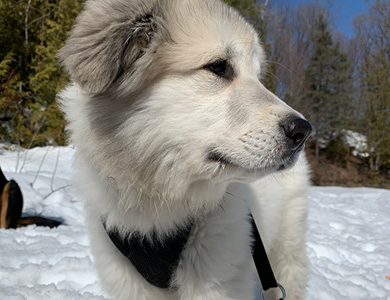
Life expectancy and health;
Great Pyrenees have an average life expectancy of 10 to 12 years, which is respectable for a large breed. However, like all breeds, they are prone to health issues, namely degenerative and hereditary conditions (affecting the bones, marrow and cartilage), various types of cancer, congenital deafness, heart problems and eye disorders.
Fortunately, breeders now have several tests available for most of these conditions, which help them identify the healthy sires and make judicious mating choices so that they can prevent pups from being affected later on. It is always very important to choose your breeder by taking into account the health and genetics of the dogs used for breeding purposes.
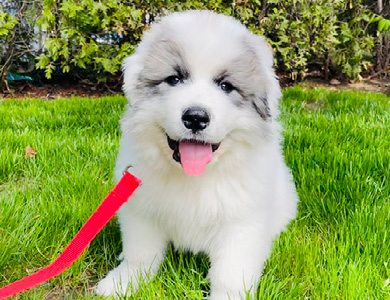
Energy level and temperament
These dependable guardians generally exhibit a zen-like calmness and are excellent family dogs, but they can quickly swing into action and move with elegance and speed to confront danger. Great Pyrenees are generally not very active, since they were bred to be livestock guardians and stay in the same place for several hours patrolling their territory, while saving their energy to drive off anything that might attack the herd. Moderate exercise, such as walks with their owners, will keep them healthy and happy.
Le montage des Pyrénées a été développé pour être un penseur indépendant, afin qu’il puisse travailler sans guide pour surveiller et protéger son troupeau. Bien que les chiens de cette race soient intelligents et de travail, les cours d’obéissance typiques seront généralement accueillis avec une grande indifférence de leur part, car ils ne voient pas l’intérêt du « assis, marche au pied et reste ». Ils laisseront transparaître leur ennui en effectuant toute tâche que l’on juge importante dans ces cours avec des réponses extrêmement lentes. Néanmoins, des cours de socialisation en jeune âge sont tout de même recommandés pour aider votre montage des Pyrénées à devenir un compagnon bien élevé.
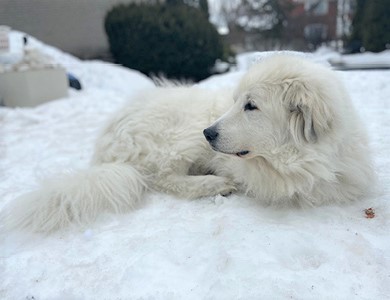
Maintenance and grooming
Despite their abundant fur, Great Pyrenees don’t require much grooming because their coat is dirt- and tangle-resistant. Since they have an abundant undercoat, they shed a great deal with each change of season. A deep brushing once a week with a pin brush or slicker brush will greatly help decrease regular shedding and the amount of hair around your home. Great Pyrenees require only occasional baths, but their nails should be clipped regularly, ideally every two weeks, to prevent discomfort and foot problems. Their teeth should be brushed often, using toothpaste designed for dogs.
It’s also important to note that Great Pyrenees tend to eat relatively little for dogs of that size. If that’s the case with your dog, but it seems in good shape and its habits remain the same, don’t be alarmed. It’s completely normal.
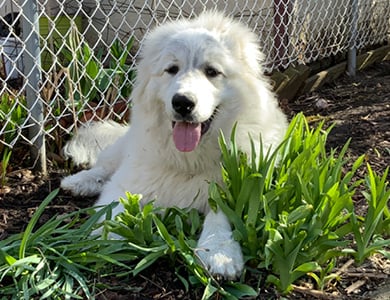
Origins
The Great Pyrenees get their name from the region where they were used as guardians of the flocks in the Pyrenees, the mountain range that lies between France and Spain. The breed likely evolved from a group of white mountain flock guard dogs that originated in Asia Minor approximately 10,000 years ago. It is very plausible that these large, white dogs arrived in the Pyrenees Mountains with their shepherds and domestic sheep around 3000 BC. There they met the natives of the region, including the Basques, descendants of Cro-Magnon Man. In the isolation of the Pyrenees over these millennia, the breed has developed the characteristics that make it unique to the group of herding dogs in general and to the predominantly white members of this group.
During this long period, the Great Pyrenees was mainly a mountain dog used by farmers and developed a special relationship with shepherds, their families and flocks. In 1662, dogs were transported to Newfoundland by Basque fishermen as companions and guardians of the new colony. It was there that the breed was bred with the black curly-haired retriever, the favorite of the English settlers. This cross resulted in the Newfoundland Landseer (black and white).
In 1675, they were adopted as the royal dog of France by the Dauphin at the court of King Louis XIV, and then became highly sought after by the nobility.
After the decimating effects of World War I, the numbers and quality of the breed were severely compromised. A few dedicated breeders, led by Mr. Senac Lagrange, worked to restore the breed to its former glory. They brought together the remnants of the two former clubs and formed the "Réunion des Amateurs de Chiens Pyrénéens" which still exists today. It was in the early 1930s that the breed saw its first breeding in North America with Mr. and Mrs. Francis Crane of Basquaerie Kennels in Needham, Massachusetts. Their lifelong efforts provided the breed with an environment in which it could flourish and prosper. They imported large breeding stock from Europe just before the continent was closed by World War II. Today, the Great Pyrenees is as much a working dog as it is a companion and family dog, and some still serve as herders on farms and ranches.
For more information, contact a registered breeder at the Canadian Kennel Club, who can answer all your questions. You can also contact the organization for information on breeders and the various breed clubs in Quebec and elsewhere in Canada.


